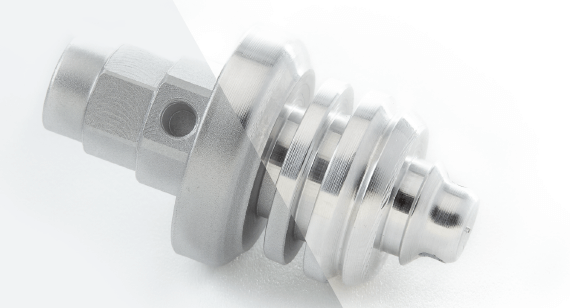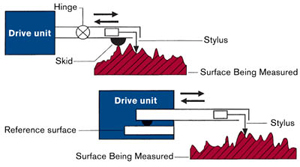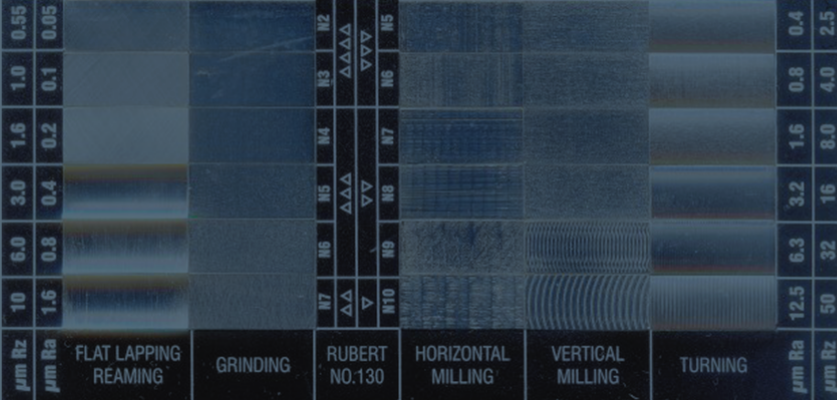Table of Contents
Rms surface finish is a critical factor that contributes to the performance and durability of a product. It is an essential measurement that determines the smoothness of a surface after it has been processed.
In the manufacturing industry, Rms surface finish plays a crucial role in ensuring that products meet the required specifications and standards. It is a vital aspect that affects the functionality, appearance, and overall quality of a product. In this article, we will delve into the basics of Rms surface finish and its importance in different industries.
Understanding Rms Surface Finish: Everything You Need to Know
Rms surface finish is a widely used term in the manufacturing industry. It refers to the measurement of the roughness of a surface, which is a crucial factor in determining the quality and performance of a product. In this article, we’ll explore what Rms surface finish is, how it’s measured, and its applications in various industries.
What is Rms Surface Finish?
Rms surface finish, also known as root mean square surface finish, is a measure of the microscopic peaks and valleys on a surface. It’s calculated by finding the average of the squared values of the surface roughness, which is then square rooted to give the Rms value. The Rms value provides a more accurate representation of the surface roughness than other methods, as it takes into account all the peaks and valleys, rather than just the highest or lowest points.
Rms surface finish is measured in microinches or micrometers, and the lower the value, the smoother the surface. A smooth surface finish is desirable in many applications, as it reduces friction, improves wear resistance, and enhances the appearance of the product. However, in some cases, a rough surface finish may be required to improve adhesion or promote lubrication.
How is Rms Surface Finish Measured?
Rms surface finish can be measured using a variety of tools, including profilometers, surface roughness testers, and atomic force microscopes. These tools use different methods to measure the peaks and valleys on a surface and calculate the Rms value.
Profilometers are the most common tool used for measuring Rms surface finish. They work by dragging a stylus across the surface and recording the height variations. The data is then analyzed to calculate the Rms value.
Surface roughness testers use a similar method to profilometers but are designed for quick and easy measurements. They’re often handheld and can be used on a variety of surfaces.
Atomic force microscopes use a different method to measure surface roughness. They use a tiny probe to scan the surface and create a 3D image, which is then analyzed to calculate the Rms value.
Applications of Rms Surface Finish
Rms surface finish is used in a wide range of industries, including aerospace, automotive, medical, and electronics. In aerospace, a smooth surface finish is critical for reducing drag and improving fuel efficiency. In the automotive industry, a smooth surface finish improves the performance and longevity of engine components. In the medical industry, a smooth surface finish is essential for reducing the risk of infection and improving biocompatibility. In the electronics industry, a smooth surface finish enhances the conductivity of components and improves their reliability.
Benefits of Rms Surface Finish
A smooth Rms surface finish provides several benefits, including:
- Reduced friction and wear
- Improved corrosion resistance
- Enhanced appearance
- Improved biocompatibility
- Improved conductivity
- Improved adhesion
- Reduced noise and vibration
However, it’s important to note that achieving a smooth Rms surface finish can be challenging and may require specialized equipment and processes.
Rms Surface Finish vs. Ra Surface Finish
Ra surface finish is another commonly used measurement of surface roughness. It stands for roughness average and is calculated by finding the average of the absolute values of the surface roughness. While Ra and Rms are both measures of surface roughness, they provide different information. Ra measures the average roughness of a surface, while Rms measures the root mean square of the roughness. Rms provides a more accurate representation of the peaks and valleys on a surface, making it a better measure of the overall roughness.
Factors Affecting Rms Surface Finish
Several factors can affect the Rms surface finish of a product, including:
- The material of the product
- The manufacturing process
- The tooling used
- The speed and feed rate of the tooling
- The coolant used
By controlling these factors, manufacturers can achieve the desired Rms surface finish for their products.
Conclusion
Rms surface finish is a critical factor in determining the quality and performance of a product. It’s a measure of the microscopic peaks and valleys on a surface and is calculated by finding the average of the squared values of the surface roughness. Rms surface finish is used in a wide range of industries and provides several benefits, including reduced friction and wear, improved corrosion resistance, enhanced appearance, and improved biocompatibility. By controlling the factors that affect Rms surface finish, manufacturers can achieve the desired surface roughness for their products.
Frequently Asked Questions
Rms surface finish is a term used to describe the smoothness of a surface. It measures the average height difference between the highest and lowest points on a surface. Here are some commonly asked questions about Rms surface finish.
What is Rms Surface Finish?
Rms surface finish is a measure of the smoothness of a surface. It is calculated by taking the square root of the average of the squared heights of the surface. The resulting value represents the average height difference between the highest and lowest points on the surface.
Rms surface finish is an important factor in manufacturing and engineering, as it can affect the performance and longevity of a product. A surface with a low Rms value is smoother and less prone to wear and tear than a surface with a high Rms value.
How is Rms Surface Finish Measured?
Rms surface finish is measured using a device called a profilometer. This instrument uses a diamond-tipped stylus to traverse the surface of the material, recording the height variations as it goes. The resulting data is then used to calculate the Rms value of the surface.
It’s important to note that Rms surface finish is just one of several metrics used to measure surface smoothness. Other metrics include Ra (roughness average) and Rz (roughness depth).
What are Some Common Rms Surface Finish Values?
Rms surface finish values can vary widely depending on the material and manufacturing process used. However, there are some common Rms values associated with certain types of surfaces. For example, a mirror finish might have an Rms value of 0.02 micrometers, while a rough cast iron surface might have an Rms value of 6.3 micrometers.
In general, a lower Rms value indicates a smoother surface, while a higher Rms value indicates a rougher surface. The desired Rms value will depend on the specific application of the surface.
How Does Rms Surface Finish Affect Sealant and Adhesive Performance?
Rms surface finish can have a significant impact on the performance of sealants and adhesives. A surface with a high Rms value can prevent proper adhesion by creating gaps and voids in the bond. Conversely, a surface with a low Rms value can provide a strong and reliable bond.
To ensure proper adhesion, it’s important to consider the Rms surface finish when selecting a sealant or adhesive. The manufacturer’s specifications should provide guidance on the appropriate Rms range for optimal performance.
Can Rms Surface Finish be Improved?
Yes, Rms surface finish can be improved through various methods, such as polishing, honing, or grinding. These processes can remove surface irregularities and smooth out the surface, resulting in a lower Rms value.
It’s important to note that improving the Rms surface finish can also impact other surface characteristics, such as surface roughness and waviness. Therefore, it’s important to carefully consider the desired surface characteristics before selecting a surface finishing process.
In conclusion, RMS surface finish is a measurement of the roughness of a surface. It is calculated by measuring the average deviation of the surface from its mean line. This measurement is important in various industries, including manufacturing, where it helps to ensure that products meet specific standards of quality and functionality.
Moreover, understanding RMS surface finish can help individuals make informed decisions when selecting materials and manufacturing processes. By knowing the desired RMS value for a particular application, manufacturers can choose the appropriate tools and techniques to achieve the desired finish.
Finally, while RMS surface finish may seem like a technical concept, it has real-world applications that impact many aspects of our lives. From the smoothness of a car’s exterior to the accuracy of medical devices, the quality of the surface finish can make a significant difference in the performance and functionality of a wide range of products.
Request a quote today!
[contact-form-7 id="1578" title="Contact form"]
Please compress the file into a ZIP or RAR file before uploading. Alternatively, send through your RFQ by email.
enquires@unitymanufacture.com





